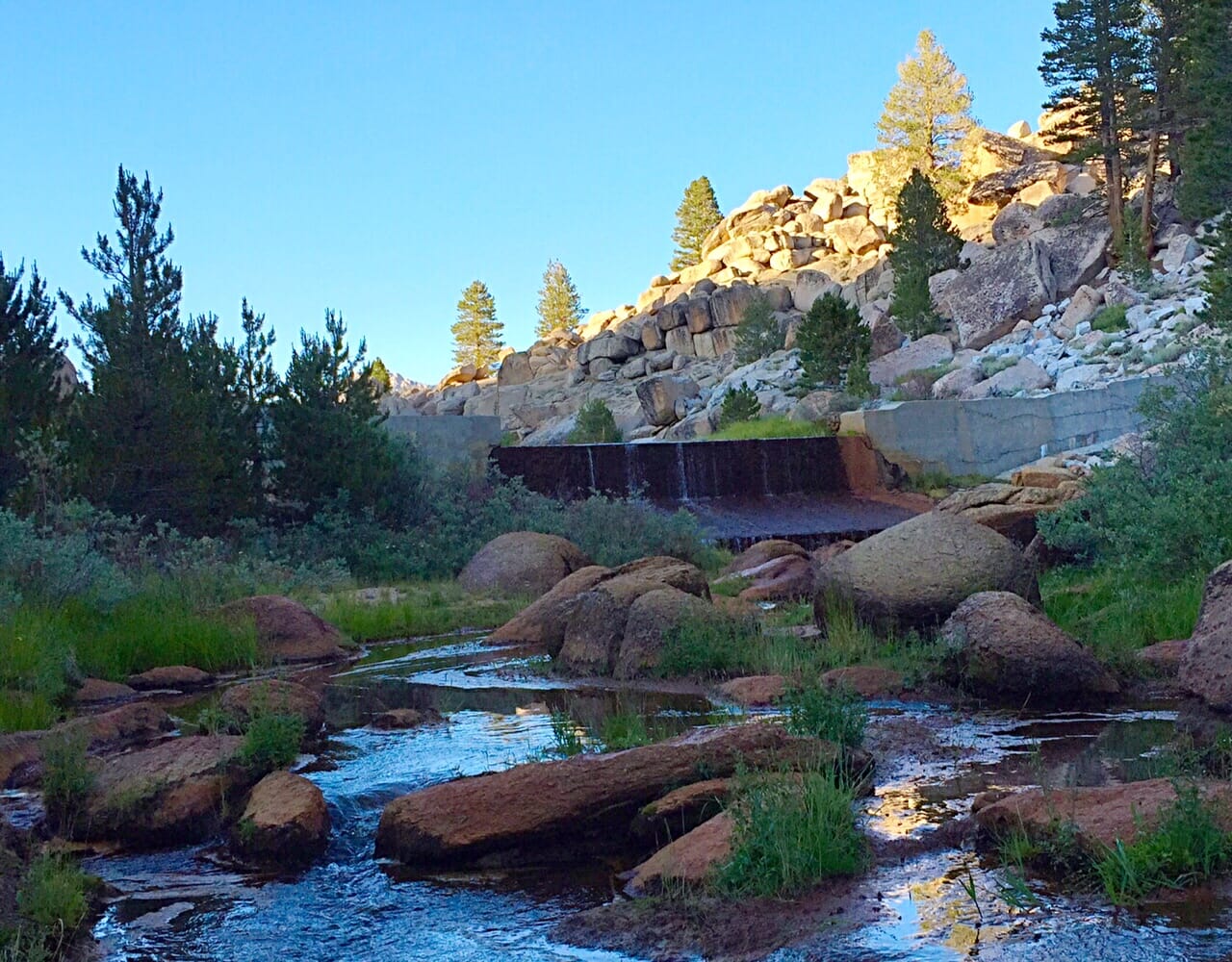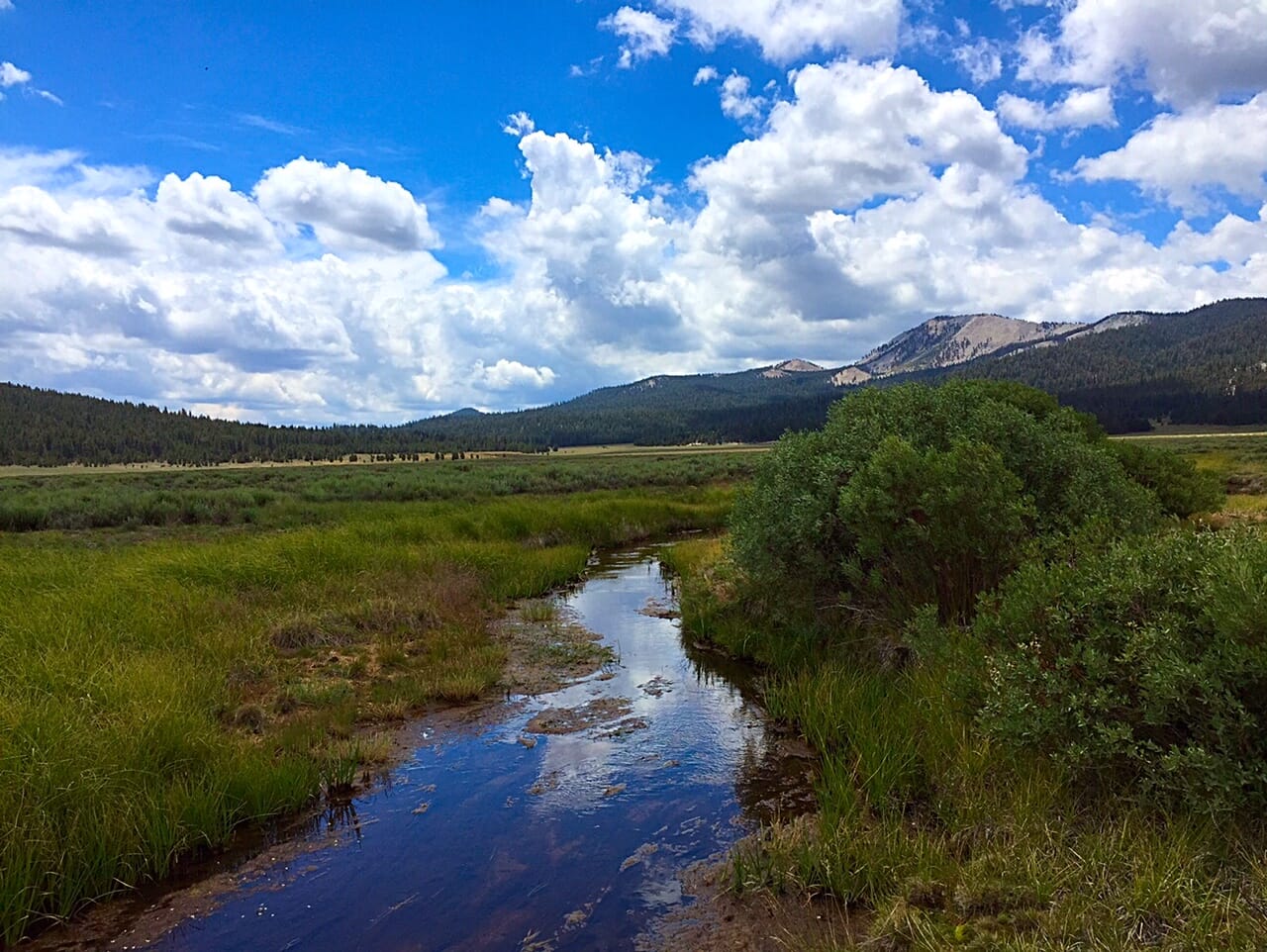Backcountry meadow stream, Kern Plateau, Inyo National Forest
A newly released resource management plan for public lands in California’s southern Sierra reflects Trout Unlimited’s long-term investment in such planning across the country.
This region is home to some of the most unique coldwater fish, habitat and fishing opportunities in North America, including the native range for the golden trout, considered by many anglers to be the most beautiful of all trout and salmon.
On August 3, the Inyo National Forest released its final Supplemental Environmental Impact Statement and draft Record of Decision for its Revised Forest Plan. The Inyo will host a public meeting to discuss the highlights of its updated Forest Plan on August 7, from 5:30 to 7 pm at Cerro Coso Community College, 4090 W Line Street, in Bishop. Anglers and others with an interest in the natural resources and recreation opportunities of the Inyo National Forest are encouraged to attend.
Revisions to and implementation of formal resource management plans such as that just released by the Inyo are one key way to protect intact, functional fish habitat on public lands—such as that often found in the headwaters at higher elevations. Updates to existing plans, and development of new ones, provide an opportunity to gain stronger resource management guidance and prescriptions. Such plans may be required for a discrete project, an entire land management unit (such as a national park or forest), or for larger ecosystems.
TU is involved in public lands management planning at every level across the U.S. In California, we have been closely engaged with updates to national forest management plans. Three national forests—the Inyo, Sierra and Sequoia—were the first in this state to implement the forest plan revision process under new rules adopted in 2012. Millions of acres of good fish and wildlife habitat, and diverse fishing and hunting opportunities, are at stake.
 (R) Templeton barrier, SF Kern River, Inyo NF.
(R) Templeton barrier, SF Kern River, Inyo NF.
TU’s California Field Coordinator, Jessica Strickland, has represented TU and anglers’ interests in the Inyo plan revision process over the past five years, involving intensive data analysis and countless meetings, conference calls, and email threads. We have reviewed and commented on all released documents, originating with the Forest bio-assessments and continuing through the Inyo’s need-for-change analysis and environmental impacts statements. Our efforts have largely focused on the Inyo’s strategy for conserving aquatic resources, its analyses of areas that qualify for permanent protection through special designations, and other plan elements that will affect coldwater fish and fishing and hunting opportunity.
TU is now reviewing the massive Final EIS for the Inyo. At this time, we can say that the advocacy of TU members and the broader angling community has helped improve the Inyo Forest Plan in several ways. The Revised Forest Plan:
- Adopts a “Conservation Watershed” approach and would manage four areas of the forest under this classification. This new resource management concept essentially replaces Critical Aquatic Refuges (CARs), and, with full compliance with its guidance, TU believes it is a step in the right direction in terms of better conserving aquatics resources. However, in adopting this approach the Inyo has reduced protections from portions of Hot Creek and Deadman Creek previously managed as CARs. TU has strongly urged the Inyo to keep these protections in place.
- Recommends that 37,000 acres of backcountry be designated as Wilderness, the highest standard for resource protection (in which fishing and hunting are expressly allowed).
- Recommends over 70 segments of 32 streams (~242 river miles) as eligible for federal Wild and Scenic River designation. Such designation generally prevents new dams and other development (although valid existing mineral claims can be mined) and requires a specific plan to ensure the outstanding values of that river segment will be conserved.
Stay tuned for more information on the Revised Forest Plan for the Inyo National Forest, and what you can do to help the Forest Service fully implement its conservation guidance and requirements.



